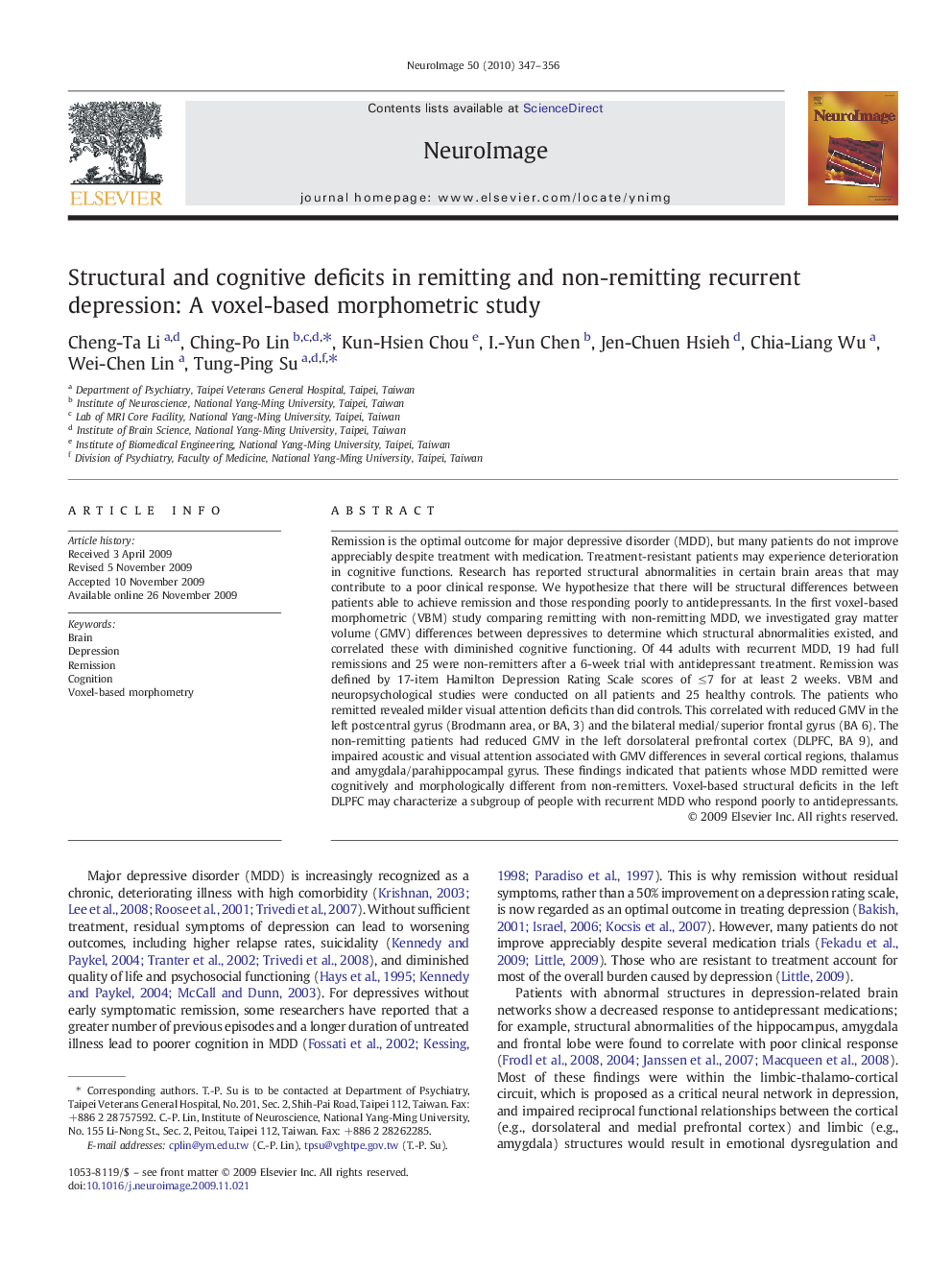| Article ID | Journal | Published Year | Pages | File Type |
|---|---|---|---|---|
| 6036977 | NeuroImage | 2010 | 10 Pages |
Abstract
Remission is the optimal outcome for major depressive disorder (MDD), but many patients do not improve appreciably despite treatment with medication. Treatment-resistant patients may experience deterioration in cognitive functions. Research has reported structural abnormalities in certain brain areas that may contribute to a poor clinical response. We hypothesize that there will be structural differences between patients able to achieve remission and those responding poorly to antidepressants. In the first voxel-based morphometric (VBM) study comparing remitting with non-remitting MDD, we investigated gray matter volume (GMV) differences between depressives to determine which structural abnormalities existed, and correlated these with diminished cognitive functioning. Of 44 adults with recurrent MDD, 19 had full remissions and 25 were non-remitters after a 6-week trial with antidepressant treatment. Remission was defined by 17-item Hamilton Depression Rating Scale scores of â¤Â 7 for at least 2 weeks. VBM and neuropsychological studies were conducted on all patients and 25 healthy controls. The patients who remitted revealed milder visual attention deficits than did controls. This correlated with reduced GMV in the left postcentral gyrus (Brodmann area, or BA, 3) and the bilateral medial/superior frontal gyrus (BA 6). The non-remitting patients had reduced GMV in the left dorsolateral prefrontal cortex (DLPFC, BA 9), and impaired acoustic and visual attention associated with GMV differences in several cortical regions, thalamus and amygdala/parahippocampal gyrus. These findings indicated that patients whose MDD remitted were cognitively and morphologically different from non-remitters. Voxel-based structural deficits in the left DLPFC may characterize a subgroup of people with recurrent MDD who respond poorly to antidepressants.
Related Topics
Life Sciences
Neuroscience
Cognitive Neuroscience
Authors
Cheng-Ta Li, Ching-Po Lin, Kun-Hsien Chou, I.-Yun Chen, Jen-Chuen Hsieh, Chia-Liang Wu, Wei-Chen Lin, Tung-Ping Su,
